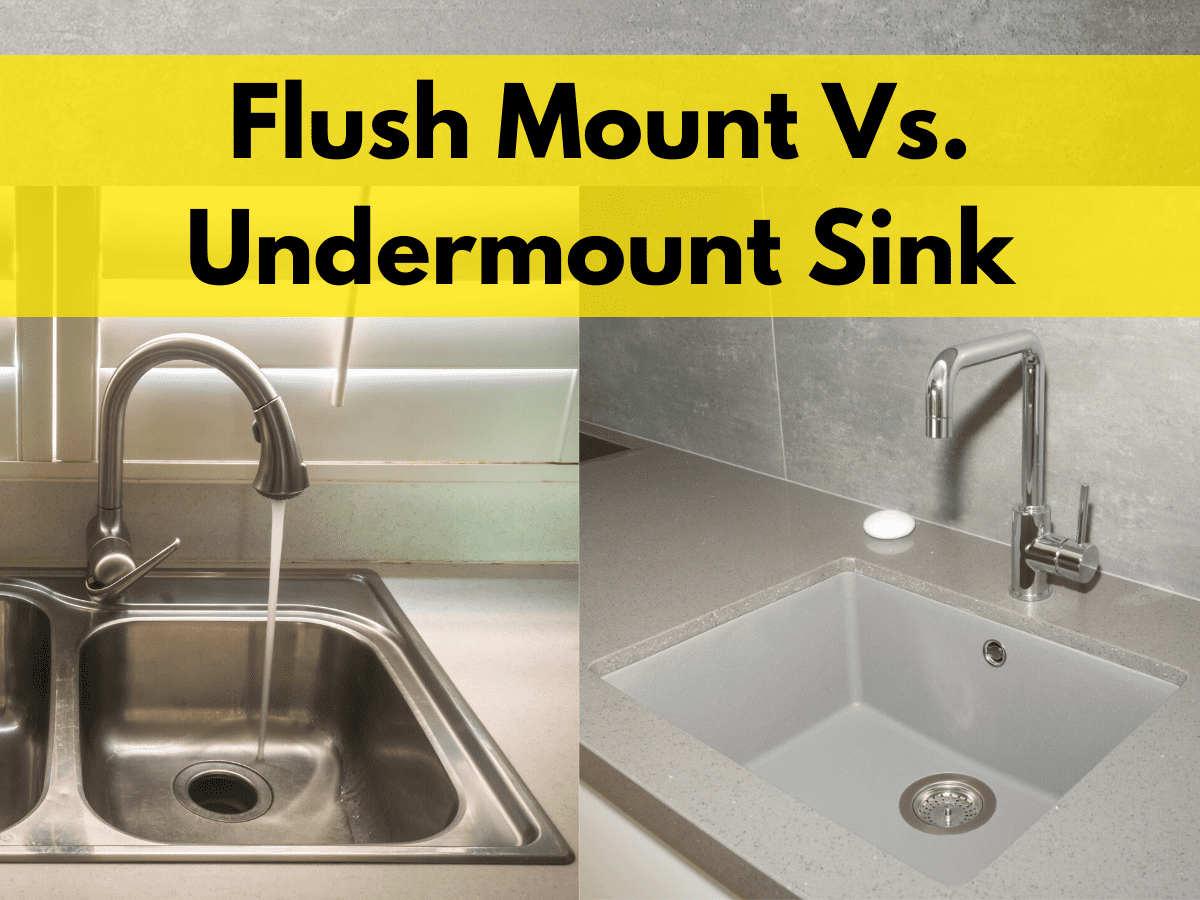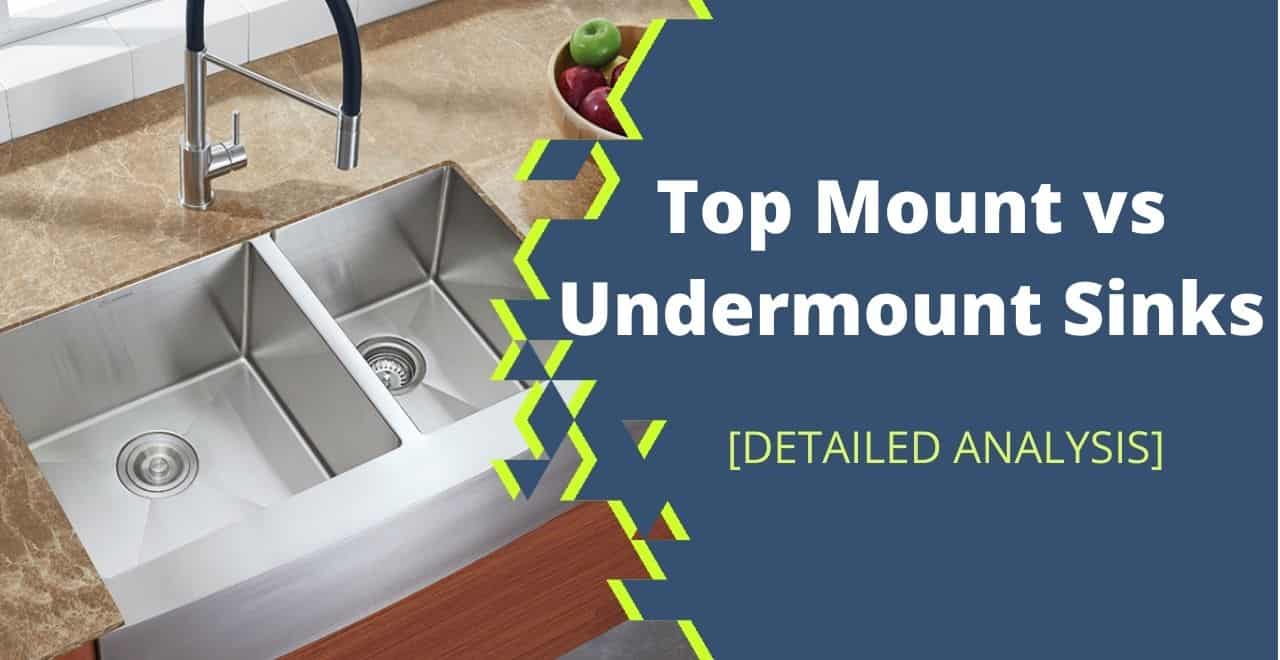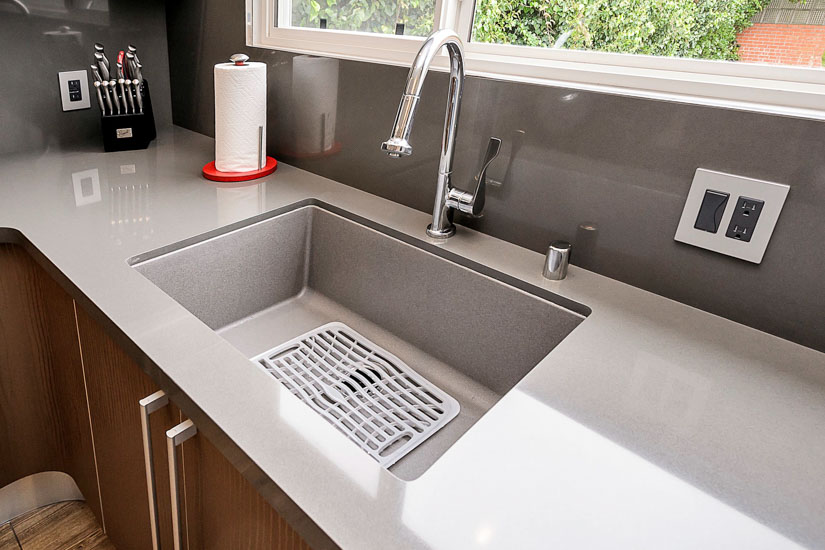An undermount kitchen sink is a popular choice for modern homes, providing a sleek and seamless look to any kitchen. But like any other kitchen feature, it comes with its own set of pros and cons. Before deciding whether an undermount kitchen sink is right for you, it's important to understand these advantages and disadvantages. In this article, we will explore the top 10 pros and cons of undermount kitchen sinks.Pros and Cons of Undermount Kitchen Sink
Let's start with the advantages of an undermount kitchen sink. One of the main benefits is the aesthetic appeal it adds to a kitchen. Since the sink is mounted underneath the countertop, there are no visible edges or seams, creating a clean and modern look. Another advantage is the ease of cleaning. With no edges or seams to trap dirt and grime, cleaning the sink becomes a breeze. Simply wipe down the surface and you're done. Undermount kitchen sinks also offer more counter space, as there is no lip around the edges. This can be especially beneficial for smaller kitchens where every inch of counter space counts. On the other hand, there are also some cons to consider. One of the main drawbacks of an undermount kitchen sink is the cost. They tend to be more expensive than top mount sinks due to the extra labor and materials required for installation. Another potential downside is the potential for water damage. Since the sink is mounted underneath the countertop, any leaks or water spills can seep into the counter and cause damage. This is something to keep in mind when considering an undermount kitchen sink.Undermount Kitchen Sink Pros and Cons
Now let's delve deeper into the pros and cons of undermount kitchen sinks. The Pros: 1. Sleek and modern look - As mentioned earlier, an undermount kitchen sink provides a seamless and clean look to any kitchen. 2. Easy to clean - With no edges or seams, cleaning the sink is a hassle-free task. 3. More counter space - The lack of a lip around the edges of the sink allows for more counter space. 4. Versatility - Undermount sinks come in a variety of materials, sizes, and styles, making them a versatile choice for any kitchen. 5. Increases home value - The modern and upscale look of an undermount kitchen sink can add value to your home. The Cons: 1. Cost - As mentioned earlier, undermount sinks tend to be more expensive than top mount sinks. 2. Potential for water damage - Any leaks or water spills can seep into the counter and cause damage. 3. Difficult installation - Installing an undermount sink requires extra labor and materials, making it a more time-consuming and complex process. 4. Limited options for certain types of countertops - Undermount sinks can only be installed with certain types of countertops, such as granite or quartz. 5. May require additional support - Depending on the weight of the sink and the material of the countertop, additional support may be needed to prevent it from sagging or breaking.Advantages and Disadvantages of Undermount Kitchen Sink
Now that we've looked at the pros and cons of undermount kitchen sinks, let's discuss some of the specific benefits and drawbacks in more detail. The Benefits: 1. Seamless integration - With no visible edges or seams, undermount sinks create a seamless integration with the countertop, giving your kitchen a modern and streamlined look. 2. Easy to clean - As mentioned earlier, cleaning an undermount sink is a simple and straightforward task. 3. More counter space - The lack of a lip around the edges of the sink allows for more counter space, giving you more room to work with in your kitchen. 4. Durable - Undermount sinks are typically made from high-quality materials, making them strong and durable. 5. Versatile design options - Undermount sinks come in a variety of materials, sizes, and styles, allowing you to find the perfect fit for your kitchen. The Drawbacks: 1. Higher cost - Undermount sinks tend to be more expensive than top mount sinks due to the extra labor and materials required for installation. 2. Potential for water damage - As mentioned earlier, any leaks or spills can cause damage to the counter and potentially lead to mold growth. 3. Installation challenges - Installing an undermount sink can be a challenging and time-consuming process, especially if additional support is needed. 4. Limited options for certain types of countertops - Undermount sinks can only be installed with certain types of countertops, limiting your options if you have a specific material in mind. 5. Size limitations - Undermount sinks may not work for smaller kitchens with limited counter space, as they can take up more room than top mount sinks.Undermount Kitchen Sink Benefits and Drawbacks
After considering the pros and cons of undermount kitchen sinks, the question remains - is it the right choice for you? Ultimately, the answer depends on your personal preferences, budget, and the layout of your kitchen. If you value a sleek and modern look and have the budget for it, an undermount sink may be the perfect choice for your kitchen. However, if you have a smaller budget and are willing to compromise on aesthetics, a top mount sink may be a more practical option.Is an Undermount Kitchen Sink Right for You?
When it comes to choosing between an undermount sink and a top mount sink, there is no clear winner. It all depends on your specific needs and preferences. Undermount sinks offer a modern and seamless look, more counter space, and easy cleaning, but they come at a higher cost and may require more maintenance. Top mount sinks are more budget-friendly and easier to install, but they may not offer the same aesthetic appeal and can be more challenging to clean.Undermount Kitchen Sink vs. Top Mount: Which is Better?
Despite the potential drawbacks, undermount kitchen sinks remain a popular choice for many homeowners. Here are some of the top reasons why people choose an undermount sink: 1. Aesthetic appeal - Undermount sinks provide a sleek and modern look to any kitchen, making it a popular choice for those who value aesthetics. 2. Easy to clean - With no edges or seams to trap dirt and grime, cleaning an undermount sink is a breeze. 3. Increased counter space - The lack of a lip around the edges of the sink allows for more counter space, which can be beneficial for smaller kitchens. 4. Versatility - Undermount sinks come in a variety of materials and styles, making them a versatile choice for any kitchen. 5. Adds value to your home - The modern and upscale look of an undermount sink can add value to your home, making it a worthwhile investment.Why Choose an Undermount Kitchen Sink?
Installing an undermount kitchen sink is a more complex process compared to top mount sinks, and it comes with its own set of pros and cons. The Pros: 1. Sleek and seamless look - The undermount sink is mounted underneath the countertop, providing a seamless and modern look. 2. More counter space - The lack of a lip around the edges of the sink allows for more counter space. 3. Easy to clean - With no edges or seams, cleaning the sink is a simple task. The Cons: 1. Higher cost - Installing an undermount sink requires extra labor and materials, making it a more expensive option. 2. Potential for water damage - Any leaks or spills can seep into the counter and cause damage. 3. Requires professional installation - Due to the complexity of the installation process, it's best to hire a professional, which can add to the cost.Undermount Kitchen Sink Installation: Pros and Cons
Proper maintenance is key to keeping your undermount kitchen sink in good condition. Here are some tips to keep in mind: 1. Clean regularly - As with any sink, regular cleaning is essential to prevent dirt and grime buildup. 2. Avoid harsh chemicals - Harsh chemicals can damage the sink's surface, so it's best to use gentle cleaning products. 3. Wipe down after use - To prevent water spots and stains, it's best to wipe down the sink after use. 4. Fix any leaks promptly - If you notice any leaks, it's important to fix them promptly to prevent water damage. 5. Be mindful of heavy objects - Avoid placing heavy objects, such as pots and pans, directly on the sink's surface to prevent damage.Undermount Kitchen Sink Maintenance: What You Need to Know
Undermount kitchen sinks come in a variety of materials, each with its own set of pros and cons. Here are some of the most popular materials used for undermount sinks: Stainless steel - Stainless steel is a durable and affordable option for undermount sinks. It's also easy to clean and resistant to stains, making it a popular choice for many homeowners. Granite composite - Granite composite sinks are made from a mixture of granite and resin, making them extremely durable and resistant to scratches and stains. They also come in a variety of colors to match any kitchen design. Cast iron - Cast iron sinks are coated with enamel, making them resistant to scratches and stains. They are also available in various colors and styles to suit any kitchen. Fireclay - Fireclay sinks are made from clay and glazed with porcelain, making them durable and resistant to stains and scratches. They also have a smooth and glossy finish, adding a touch of elegance to any kitchen.Undermount Kitchen Sink Materials: Which is Best?
Additional Pros and Cons of Undermount Kitchen Sinks

Pros
 One of the major benefits of undermount kitchen sinks is their sleek and modern appearance. Because the sink is mounted underneath the countertop, it creates a seamless and clean look that is perfect for contemporary kitchen designs. This also makes cleaning the countertop much easier, as there are no ridges or seams for food and liquids to get caught in.
Another advantage of undermount sinks is their functionality. These sinks are typically deeper and wider than traditional top-mounted sinks, allowing for more space to wash and rinse dishes. They also tend to have better water drainage, as there is no lip or edge for water to collect on. This can help prevent bacteria and mold growth in the sink.
One of the major benefits of undermount kitchen sinks is their sleek and modern appearance. Because the sink is mounted underneath the countertop, it creates a seamless and clean look that is perfect for contemporary kitchen designs. This also makes cleaning the countertop much easier, as there are no ridges or seams for food and liquids to get caught in.
Another advantage of undermount sinks is their functionality. These sinks are typically deeper and wider than traditional top-mounted sinks, allowing for more space to wash and rinse dishes. They also tend to have better water drainage, as there is no lip or edge for water to collect on. This can help prevent bacteria and mold growth in the sink.
Cons
 As with any home design choice, there are also some drawbacks to undermount kitchen sinks. The main disadvantage is the installation process. Unlike top-mounted sinks, undermount sinks require professional installation and can be more costly. This is because the countertop needs to be cut precisely to fit the sink and support its weight.
Another potential issue with undermount sinks is that they can be more prone to water damage if not properly installed. If the seal between the sink and the countertop is not tight, water can seep in and damage the surrounding wood or laminate. This can be especially problematic in kitchens with heavy use and exposure to water.
In conclusion,
undermount kitchen sinks offer a sleek and functional option for modern kitchen designs. While there are some downsides to consider, the benefits of these sinks often outweigh the drawbacks. Whether you are looking for a more contemporary look or simply want a more practical sink option, undermount sinks are definitely worth considering for your kitchen design.
As with any home design choice, there are also some drawbacks to undermount kitchen sinks. The main disadvantage is the installation process. Unlike top-mounted sinks, undermount sinks require professional installation and can be more costly. This is because the countertop needs to be cut precisely to fit the sink and support its weight.
Another potential issue with undermount sinks is that they can be more prone to water damage if not properly installed. If the seal between the sink and the countertop is not tight, water can seep in and damage the surrounding wood or laminate. This can be especially problematic in kitchens with heavy use and exposure to water.
In conclusion,
undermount kitchen sinks offer a sleek and functional option for modern kitchen designs. While there are some downsides to consider, the benefits of these sinks often outweigh the drawbacks. Whether you are looking for a more contemporary look or simply want a more practical sink option, undermount sinks are definitely worth considering for your kitchen design.
























































:max_bytes(150000):strip_icc()/undermount-vs-drop-in-kitchen-sink-1821203-f726447907dd46698cce0470da4c5e26.png)









































